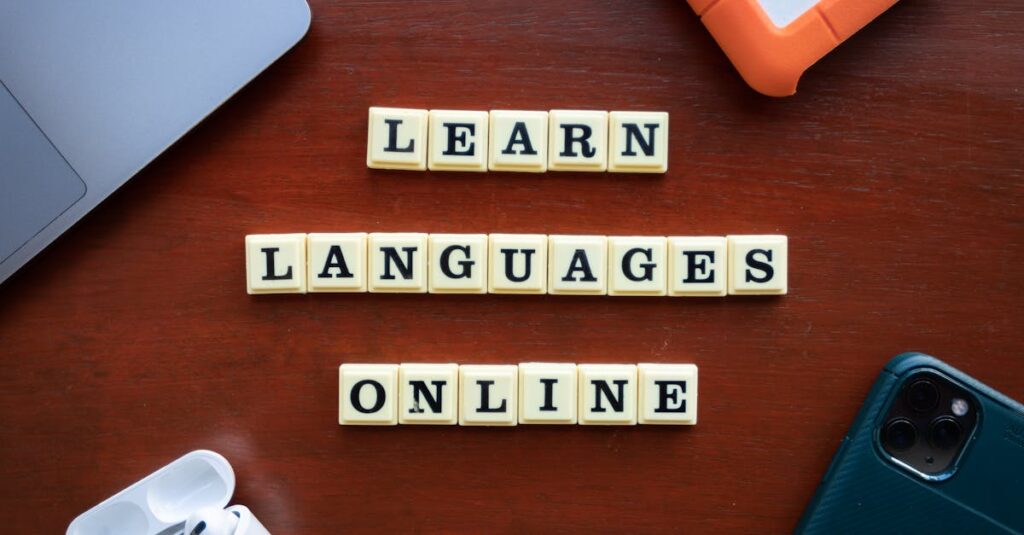Table of Contents
ToggleIn today’s information jungle, finding the right resources can feel like searching for a needle in a haystack—if the haystack was also on fire and had a mind of its own. With countless digital and non-digital options out there, how does one sift through the chaos to find the gems? Enter assessment tools, the unsung heroes of resource selection.
Overview of Assessment Tools
Assessment tools help individuals select relevant and appropriate digital and non-digital resources. These tools streamline the evaluation process, making it easier to identify high-quality materials.
Importance of Selecting Relevant Resources
Selecting relevant resources enhances learning and engagement. Relevant materials align with specific learning goals and objectives. Quality resources increase retention and comprehension. Students benefit from materials tailored to their needs, promoting motivation and interest. Therefore, choosing the right resources leads to a more effective learning experience.
Types of Assessment Tools
Various assessment tools exist to assist in resource evaluation. Checklists provide a simple way to assess quality criteria, ensuring all essential factors are considered. Rating scales encourage subjective evaluation, allowing users to prioritize resources based on specific metrics. Rubrics offer detailed criteria, guiding users through complex assessments with clear benchmarks. Surveys gather user feedback on resource effectiveness, highlighting areas for improvement. These tools collectively facilitate a comprehensive approach to resource selection.
Digital Resources Assessment Tools
Assessment tools streamline the process of selecting digital resources by providing structured evaluation methods. These tools help users identify essential criteria that enhance learning outcomes and engagement.
Criteria for Evaluation
Users prioritize several criteria for evaluating digital resources. Relevance to learning objectives ensures that materials align closely with educational goals. Accuracy plays a critical role, as reliable information upholds the integrity of the learning experience. Accessibility matters, allowing all learners to engage effectively with the content. Moreover, usability influences how easily individuals can navigate resources. Finally, current information maintains relevance in a fast-evolving information landscape. These criteria provide a comprehensive framework for evaluating digital tools and resources.
Popular Digital Tools
Several digital tools stand out for assessing resource quality. Google Scholar offers access to scholarly articles, enabling users to find peer-reviewed literature. Canva provides templates for creating visual content, supporting effective presentations of information. Moodle serves as a comprehensive learning management system that facilitates resource organization and assessment. Additionally, Edmodo creates an interactive learning community where users can share and evaluate various educational resources. Each tool plays a specific role in enhancing resource selection, promoting a structured approach to finding quality materials.
Non-Digital Resources Assessment Tools
Selecting non-digital resources requires careful evaluation. Various criteria ensure these materials align with specific learning goals and objectives.
Criteria for Evaluation
Quality matters when assessing non-digital resources. Relevance to the curriculum stands as a top priority, ensuring materials support specific learning outcomes. Users must also evaluate accuracy, confirming the information provided is correct and trustworthy. Accessibility is crucial; resources should be readily available to all learners. Evaluators consider usability as well, focusing on how easily learners can navigate or comprehend the material. Timeliness plays a role, too; current resources ensure learners receive updated information. Each of these criteria aids in identifying top-notch non-digital resources that enhance the educational experience.
Popular Non-Digital Tools
Several popular non-digital assessment tools enhance resource selection. Checklists serve to evaluate quality criteria systematically, offering a straightforward way to review materials. Rating scales allow users to score resources based on personal or institutional standards, adding a subjective measure to the evaluation process. Rubrics provide detailed criteria, enhancing the assessment of more complex resources. Surveys gather feedback from users, offering insight based on learner experience and satisfaction. Each of these tools plays a vital role in facilitating informed decisions about non-digital resources.
Integrating Assessment Tools into Practice
Integrating assessment tools enhances the process of selecting relevant resources. Effective practices ensure users make informed decisions throughout their resource evaluation journey.
Best Practices
Utilize checklists to evaluate both digital and non-digital resources, focusing on established quality criteria like accuracy and relevance. Implement rating scales to gather subjective user feedback efficiently, as they provide insights into usability. Encourage the use of rubrics, which clarify detailed expectations for each resource type, enhancing transparency in evaluations. Conduct surveys periodically to collect user experiences, facilitating continuous improvement of resource selection strategies. Engage stakeholders in discussions about effective practices, fostering a collaborative approach that promotes best practices across educational settings.
Case Studies
A school district successfully implemented a checklist-based approach for evaluating educational apps. Teachers reported improved alignment with curriculum standards, enhancing student engagement. In a university setting, faculty used rubrics to assess research articles’ quality. This practice led to higher student satisfaction and comprehension of course materials. A community college adopted surveys to gather student feedback on course resources. Adjustments made based on this feedback resulted in increased success rates among students. These examples demonstrate the effectiveness of structured assessment tools in diverse educational environments.
Future Trends in Assessment Tools
Assessment tools continue evolving to meet the demands of today’s educational landscapes. Innovations focus on enhancing effectiveness and adaptability of resource selection processes.
Innovations in Digital Tools
Emerging technologies reshape assessment tools for digital resources. Artificial intelligence drives personalized recommendations, tailoring resource suggestions to individual learning preferences. Data analytics offers insights into user engagement and content effectiveness, allowing educators to refine their strategies. Interactive assessment platforms integrate multimedia elements, making evaluations more engaging. Collaborative tools promote sharing of best practices among educators, enhancing collective knowledge on resource quality. These advancements aim to streamline the resource selection process, ensuring alignment with learning objectives.
Evolving Needs for Non-Digital Resources
Changes in educational environments impact the demand for non-digital assessment tools. Increased focus on experiential learning encourages evaluations that consider practical relevance and real-world application. Educators seek criteria that reflect evolving curriculum standards, necessitating updated rubrics and checklists. Accessibility remains crucial, as diverse learners require resources that cater to varying needs. Professional development opportunities emphasize integrating assessment tools into traditional instructional methods. Additionally, emphasis on local resources highlights the importance of context-specific evaluations, ensuring materials resonate with student populations. Adaptation to these trends plays a vital role in modernizing the approach to assessing non-digital resources.
Assessment tools are indispensable for navigating the complex landscape of educational resources. By employing structured methods like checklists and rubrics, individuals can make informed choices that align with learning objectives. These tools not only enhance the selection process but also improve the overall quality of resources, whether digital or non-digital.
As educational needs evolve, so do the assessment tools available. Embracing innovative technologies and adapting to new evaluation criteria will ensure that both educators and learners benefit from relevant and effective materials. Ultimately, the right assessment tools can transform the way resources are selected, fostering a more engaging and successful learning experience.




